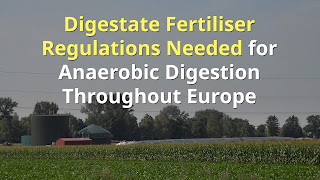The Question is: "What is landfill gas?"
Is explained in detail our LFG article: https://landfill-gas.com/what-is-land...Attribution: Source: https://en.wikipedia.org/wiki/Landfil...
The following is the article of the Video: What is Landfill Gas?
Landfill gas is a complex mix of different gases created by the action of microorganisms within a sanitary landfill.
It is produced by the fermentation process known as anaerobic digestion.
In other words by "digestion in the absence of air", which is exactly what also happens in a cow's stomach, and in biogas plants.
Landfill gas is approximately forty to sixty percent methane, with the remainder being mostly carbon dioxide.
Trace amounts of other volatile organic compounds (VOCs) comprise the remainder (less than 1%).
These trace gases include a large array of substances, mainly simple hydrocarbons.
Landfill gases have an influence on climate change.
The major components are CO2 and methane, both of which are greenhouse gas.
Methane in the atmosphere is a far more potent greenhouse gas, with each molecule having twenty five times the effect of a molecule of carbon dioxide.
Landfills are the third largest source of methane in the US.
The evolution of gas reaches a maximum at about 20 years, after the organic waste is deposited then declines over the course of decades.
U.S. Federal regulations under Subtitle D of RCRA formed in October 1979, regulates the siting, design, construction, operation, monitoring, and closure of MSW landfills.
Subtitle D now requires controls on the migration of methane in landfill gas.
Monitoring requirements must be met at landfills during their operation, and for an additional 30 years after.
The landfills affected by Subtitle D of RCRA are required to control gas by establishing a way to check for methane emissions periodically and therefore prevent off-site migration.
Please share this video https://landfill-gas.com








